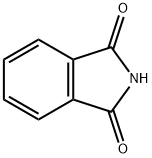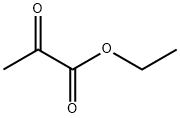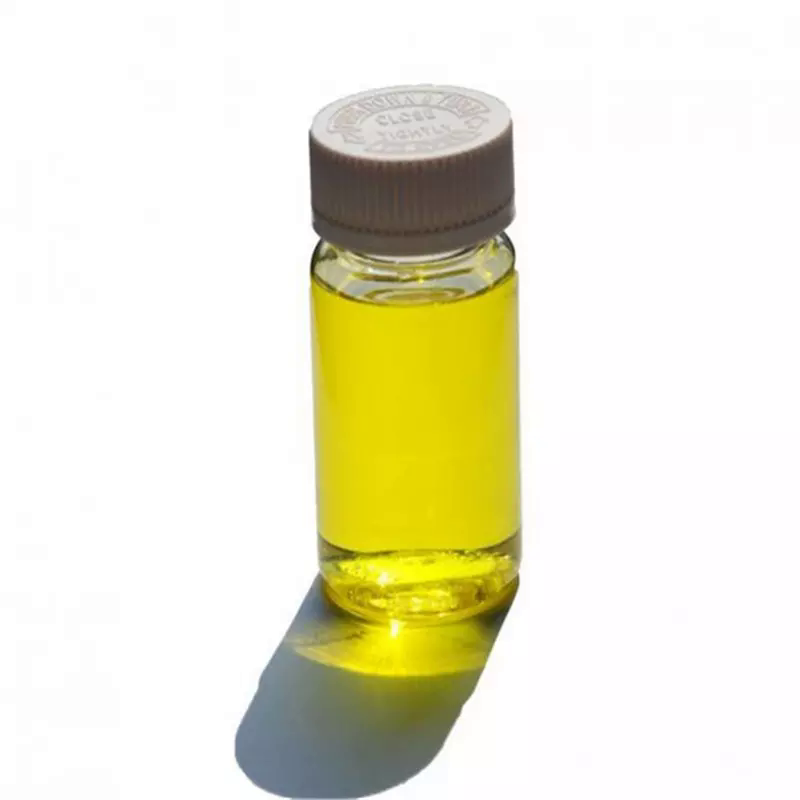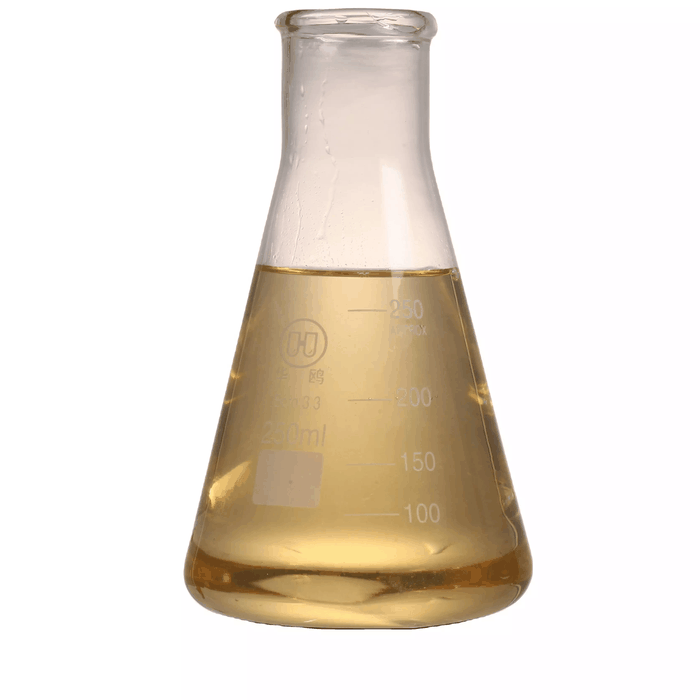1-(3-Dimethylaminopropyl)-3-ethylcarbodiimide
Synonym(s):N-Ethyl-N′-(3-dimethylaminopropyl)carbodiimide;EDC;WSC
- CAS NO.:1892-57-5
- Empirical Formula: C8H17N3
- Molecular Weight: 155.24
- MDL number: MFCD00044916
- EINECS: 217-579-2
- SAFETY DATA SHEET (SDS)
- Update Date: 2025-01-27 09:38:02

What is 1-(3-Dimethylaminopropyl)-3-ethylcarbodiimide?
Description
1-(3-Dimethylaminopropyl)-3-ethylcarbodiimide is a water-soluble carbodiimide available as hydrochloride salt. This compound is a carboxyl- and amine-reactive crosslinker that is water soluble and can activate carboxyl residues for their reaction with primary amines to form O-acylisourea as a reaction intermediate, which reacts with amide bonds to release isourea as a by-product. It can crosslink the carboxy-group of glutamate and aspartate to the side-chain primary amine of lysine and the amino group at the N-terminus. The crosslinker readily reacts at a pH range of 4.5–7.2 and only crosslinks the residues within their van der Waals distance. 1-(3-Dimethylaminopropyl)-3-ethylcarbodiimide is also widely used in fabricating different nanosystems implemented in drug/protein delivery systems. It is mainly used for surface crosslinking/immobilization of drugs to increase stability against environmental changes, such as pH or temperature[1-2].
Chemical properties
Clear light yellow liquid
The Uses of 1-(3-Dimethylaminopropyl)-3-ethylcarbodiimide
1-(3-Dimethylaminopropyl)-3-ethylcarbodiimide is used as a carboxyl activating agent and activate phosphate groups in phospho mono and di esters. It is used in peptide synthesis, 3'-amino-3'-deoxyadenosine-5'-di- and triphosphates and in the preparation of antibodies like immunoconjugates. It plays a vital role for immobilization of large biomolecules in association with N-hydroxysuccinimide. It is also used in the acylation of phosphoranes.
What are the applications of Application
N-(3-Dimethylaminopropyl)-N′-ethylcarbodiimide is an agent used to activate carboxylic acids for ester or amide formation
General Description
N-(3-Dimethylaminopropyl)-N′-ethylcarbodiimide is commonly used in combination with N-hydroxysuccinimide (NHS) in carbodiimide coupling reaction to activate carboxyl group for coupling with amines to form amides.
Synthesis
The production method of 1-(3-dimethylaminopropyl)-3-ethylcarbodiimide is to react with N, N'-dimethylpropanediamine and carbon disulfide as raw materials to prepare N, N'- Dimethylpropylthiourea. Then it is oxidized with ethyl chloroformate to obtain N, N'-dimethylpropyl isothiocyanate, which is then reacted with ethylamine and oxidized with sodium hypochlorite to obtain the product 1-(3-dimethylaminopropyl)-3- Ethylcarbodiimide.
References
[1] Manjula ;Mummadisetti et al.“Chapter Five-An approach to nearest neighbor analysis of pigment-protein complexes using chemical cross-linking in combination with mass spectrometry.” Methods in enzymology" Methods in Enzymology, 680 (2023) 139-162.
[2] Dmour, Isra and M. Taha. “Natural and semisynthetic polymers in pharmaceutical nanotechnology.”Organic Materials as Smart Nanocarriers for Drug Delivery (2018) 35-100.
Properties of 1-(3-Dimethylaminopropyl)-3-ethylcarbodiimide
| Boiling point: | 66-68°C/1mm |
| Density | 0.877 g/mL at 20 °C (lit.) |
| refractive index | n |
| Flash point: | 66-68°C/1mm |
| storage temp. | -20°C |
| solubility | Chloroform |
| pka | 9.52±0.28(Predicted) |
| form | Liquid |
| color | Colorless to slightly yellow |
| Specific Gravity | 0.885 |
| Water Solubility | Soluble in water. |
| Sensitive | Air Sensitive |
| BRN | 507429 |
| CAS DataBase Reference | 1892-57-5(CAS DataBase Reference) |
| NIST Chemistry Reference | 1,3-Propanediamine, n'-(ethylcarbonimidoyl)-n,n-dimethyl-(1892-57-5) |
| EPA Substance Registry System | 1,3-Propanediamine, N'-(ethylcarbonimidoyl)-N,N-dimethyl- (1892-57-5) |
Safety information for 1-(3-Dimethylaminopropyl)-3-ethylcarbodiimide
| Signal word | Danger |
| Pictogram(s) |
 Skull and Crossbones Acute Toxicity GHS06  Health Hazard GHS08  Environment GHS09 |
| GHS Hazard Statements |
H302:Acute toxicity,oral H311:Acute toxicity,dermal H315:Skin corrosion/irritation H317:Sensitisation, Skin H373:Specific target organ toxicity, repeated exposure H410:Hazardous to the aquatic environment, long-term hazard |
| Precautionary Statement Codes |
P260:Do not breathe dust/fume/gas/mist/vapours/spray. P273:Avoid release to the environment. P280:Wear protective gloves/protective clothing/eye protection/face protection. P314:Get medical advice/attention if you feel unwell. P301+P312:IF SWALLOWED: call a POISON CENTER or doctor/physician IF you feel unwell. |
Computed Descriptors for 1-(3-Dimethylaminopropyl)-3-ethylcarbodiimide
| InChIKey | LMDZBCPBFSXMTL-UHFFFAOYSA-N |
1-(3-Dimethylaminopropyl)-3-ethylcarbodiimide manufacturer
ASM Organics
New Products
2-Propanamine, 1-chloro-, hydrochloride (9CI) 3-Pyridineacetonitrile, α-hydroxy- 3-Iodophenylacetic acid 3-(hexyloxy)-4-(pyridin-3-yl)-1,2,5-thiadiazole 2-Hexyn-1-ol Dibenzo-18-crown-6 Strontium Carbonate, 98% Wang resin Sodium hydrogenphosphate, anhydrous 2-Bromo-3-methoxyaniline hydrochloride, 95% (Custom work) 1-Bromo-4-chlorobenzene, 99% Benzocaine, 98% (R)-2-Methylpyrolidine-2-carboxylic acid (De Mepro) Ramipril Sacubitril- Valsartan Boc-his(trt)-OH Fmoc-L-Glu-OtBu Boc-L-Tyr(tBu)-OH Semi carbazide Hydrochloride 1-Ethyl-3-(3-Dimethylaminopropyl)-Carbodiimide Hydrochloride [EDC Hcl] 5-(Difluoromethoxy)-2-Mercaptobenzimidazole 2-Chloromethyl-4-methyl-quinazoline Trans-4-Aminocyclohexanol [4tac] 2-[1-(Mercaptomethyl)Cyclopropyl]Acetic AcidRelated products of tetrahydrofuran








You may like
-
 1892-57-5 1-ETHYL-(3- DIMETHYLAMINOPROPYL)CARBODIIMIDE (EDC Free Base) 98%View Details
1892-57-5 1-ETHYL-(3- DIMETHYLAMINOPROPYL)CARBODIIMIDE (EDC Free Base) 98%View Details
1892-57-5 -
 1892-57-5 98%View Details
1892-57-5 98%View Details
1892-57-5 -
 N-(3-Dimethylaminopropyl)-N′-ethylcarbodiimide, ≥97% CAS 1892-57-5View Details
N-(3-Dimethylaminopropyl)-N′-ethylcarbodiimide, ≥97% CAS 1892-57-5View Details
1892-57-5 -
 1-Ethyl-3-(3-dimethylaminopropyl)carbodiimide 1892-57-5 98%View Details
1-Ethyl-3-(3-dimethylaminopropyl)carbodiimide 1892-57-5 98%View Details
1892-57-5 -
 1-Ethyl-3-(3-dimethylaminopropyl)carbodiimide 98%View Details
1-Ethyl-3-(3-dimethylaminopropyl)carbodiimide 98%View Details
1892-57-5 -
 1892-57-5 99%View Details
1892-57-5 99%View Details
1892-57-5 -
 1-(3-Dimethylaminopropyl)-3-ethylcarbodiimide CAS 1892-57-5View Details
1-(3-Dimethylaminopropyl)-3-ethylcarbodiimide CAS 1892-57-5View Details
1892-57-5 -
 N-(3-Dimethylaminopropyl)-N′-ethylcarbodiimide CAS 1892-57-5View Details
N-(3-Dimethylaminopropyl)-N′-ethylcarbodiimide CAS 1892-57-5View Details
1892-57-5
